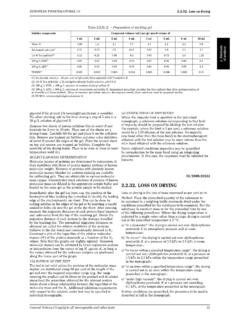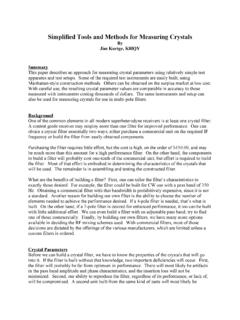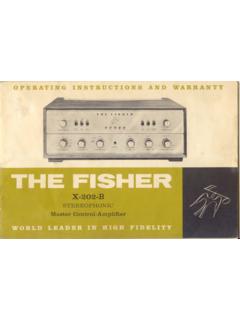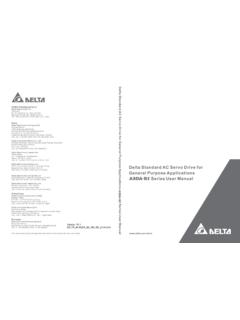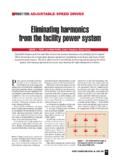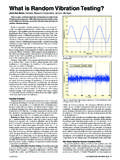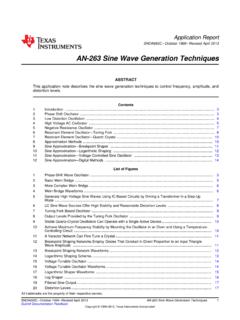Transcription of Sonic Pile Driving: The History and the …
1 Sonic pile driving : The History and the resurrection of Vibration Free pile driving Matthew Janes, MESc, PEng, MBA, Vancouver, Canada The installation of piles and casings is becoming increasingly difficult as crippling restrictions on vibration become common in major urban areas. Conventional impact and low frequency vibratory methods are no longer available to the contractor to advance piles. High frequency conventional vibrators are able to reduce the measured ground vibration in many situations, however, they often cannot meet the restrictive limits imposed and may not be used immediately adjacent to sensitive structures.
2 The use of super high frequency (up to 150 Hz or 9000 VPM) Sonic or resonant pile drivers has proven in the past to permit ease of installation of sections to great depths with near imperceptible ground vibrations as close as 1 pile diameter. Early work in the United States with the Bodine-Guild Sonic hammers and recent work with the Resonance Technology Intl resonant hammers has shown vibration free pile driving remains possible. A Brief History Sonic technology can be traced to England in 1913 when the Theory of Sonics, authored by Romanian George Constantinesco, was published by the British Admiralty.
3 In the 1930s, fellow Romanian engineer Dr. Ion Basgan applied Sonic vibrations to the drill pipe string of a conventional drilling rig. The result was improved drilling depth, speed and verticality without distortion, which was a challenge in those days with the methods available. Bore holes using the Sonic method were drilled at the Moreni oil fields of Romania in 1938. Basgan filed patents on the technology in Romania and the USA. Success in Romania led to interest in developing Sonic drilling in the USA during the 1940 s and 1950 s.
4 Concurrent developments aimed at using vibrations to drill holes were conducted in Russia in the 1930 s and 1940 s. The initial goal was to speed up oil well drilling operations and most of the research was financed by the petroleum industry. In 1949 Russian Professor Barkan of the Scientific Research Institute for Footings and Foundations reported on research conducted on rotary-vibratory ( Sonic ) drilling techniques. He proposed the use of Sonic vibrations in sinking geological exploratory drill holes. At a meeting in 1957 at the Moscow drilling Institute, drilling rates of 3 to 20 times faster than conventional methods were reported.
5 The American program was initially conducted by Drilling Research Incorporated (DRI), which was in operation from 1948 to 1959. They developed a magnetostrictive-rotary-vibratory drilling system. This method was not successful but it demonstrated that vibrations could speed up rotary drilling rates substantially. During this early period, Dr. Al Bodine worked with Borg Warner on a down-hole vibrator, which he called a Sonic drill . The machine operated using rotating eccentric masses driven by drilling fluid. Using eccentric masses produces force as a function of the square of the operating frequency.
6 Thus, increasing frequency from 50 Hz to 100Hz results in a 4x increase in peak force and accelerations. The down hole drill operated with incredible production rates, unseen in the drilling industry to that time. However, it failed because excessive vibratory energy caused mechanical failure of the down-hole components. This occurred when resonance of the internal drill components caused runaway or galloping amplitudes and accelerations. In the early 1960 s, Dr. Bodine developed a much larger top-hole vibrator. The machine was intended to be used for oil well service work such as pulling stuck casing and rehabilitating oil wells.
7 Mr. Bodine received many patents in the 1960 s for his work with orboresonace drives. In the 1960 s Bodine redirected efforts towards the development of a Sonic pile driver. He engineered large vibrators with capacities between 500 and 1000 Hp but they suffered from poor reliability. Continued effort with the assistance of Charlie Guild of Guild Construction in Rhode Island and later with support of the Shell Oil Company improved both the performance of the equipment and understanding of its application. The larger vibrators worked successfully on many projects posting impressive production rates.
8 These projects included the BART, Harvard University Museum Building and Merritt Island, Mass. At this time a young physics graduate from Cal Berkeley named Alan Bies, PhD joined the Bodine team. He witnessed the success of the equipment and understood the theory or resonance intimately. It became Dr Bies s opinion that while the principle of using resonance was sound, the driving mechanism being applied (eccentric mass) was ill-suited to driving a resonant system in a controlled manner. Dr Bies later left the company and became a world renowned Professor of Acoustics in Australia.
9 The Bodine Sonic Hammer featuring twin Sherman Tank Engines. Though the Bodine hammers called themselves Sonic they were in fact taking advantage of the concept of resonance. Resonance is achieved in many mechanical systems such as pushing a child on a swing or shattering a wine glass with a tuning fork. The vibrator simply supplies vibration power in tune with the natural frequency of the pile for maximum energy efficiency with no energy wasted in the re-mobilization of the pile . The pile stores the energy elastically as a spring, expanding and contracting at its natural frequency.
10 The reader is familiar with the propagation of a stress wave in a pile during impact driving . The impact impulse travels down the pile as a compression wave and reflects from the toe back to the surface as a tension wave. This wave reflection occurs over a time that is the natural period (frequency=1/period) of the pile . To achieve resonance the push and pull cycle of the Sonic vibrator must coincide with the input and reflected stress waves. The Sonic vibrator must apply a downward compression force that creates a traveling stress pulse down the pile .

